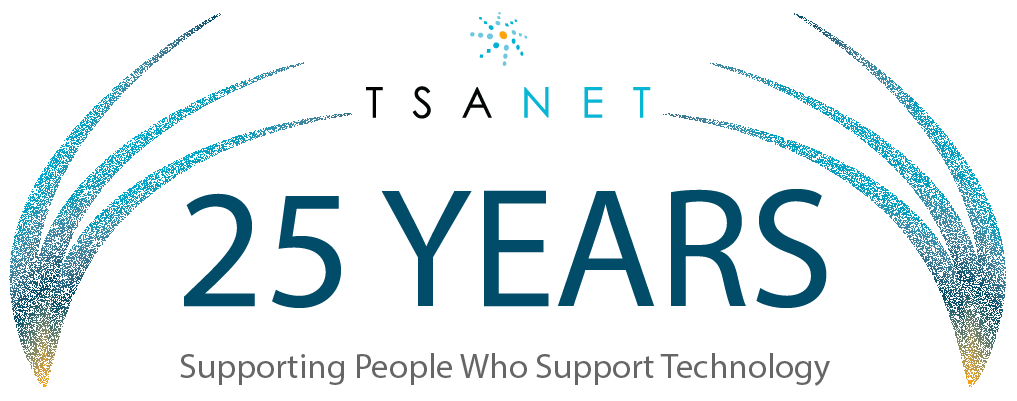Founded in 1993, TSANet continues to evolve with growth in membership and value every year. In celebration of our 25th year anniversary, we take a look back at where it all started.
Why was TSANet created?
During 1993, several major technology leaders sought the need for a vendor neutral support alliance to help solve rising interoperability challenges technology companies were facing. Many had formed vendor-centric alliances creating an “invitation-only” method of industry collaboration. At the time, there was a newly formed technical support alliance called NTSA, Networking Technical Support Alliance. NTSA provided the industry an engagement mechanism but only allowed vendors involved with networking technologies to participate. The major technology leaders, wishing to broaden the target audience, and encompass all technology sectors eventually lead to the creation of TSANet.
Where did the name TSANet originate?
The name “TSANet”, which stands for Technical Support Alliance Network, is a derivative of NTSA. The organization wanted a name that incorporated the words “technical support alliance,” and had a competitive edge. NTSA was later acquired by TSANet.
Who were the founding members?
The founding members of TSANet were 3-Com, Apple, Banyan, Borland, Compaq, Dell, Hewlett-Packard, IBM, Lotus, NetFrame, Novell, SCO, Standard Microsystems, SynOptics, Thomas Contrad, Tricord, QMS, Wall Data, and WordPerfect. Each company was recruited as a sponsor and paid $15,000 for a two-year membership. Perri Bird of Novell was elected as the first president of TSANet and Dennis Smeltzer was hired as the executive director.
What was the main problem the founding members wanted to solve?
In 1993, the proliferation of LANs and WANs as well as client-server technology was starting to gain major market share. Networking opened up the need for technology providers, even though still in a very competitive environment, to work together. Technology providers, once isolated from each other, now had the framework to cooperate with each other. Instead of a single company owning the problem and the customer, companies found themselves having to collaborate to solve joint mutual customer problems. The founding members realized that creating a multivendor, neutral support platform was the best way to solve this problem. These original companies had the foresight to see where technology and support strategy was headed. We were moving into a new era, one where the customer became the focal point requiring many technology competitors to cooperate.
What was the technology used to support the organization?
The first TSANet database was on a 3.5-inch floppy and was distributed via modem by Lotus Notes. Shortly thereafter, a crude version was available on the newly introduced Internet via dedicated standard voice lines with modems. TSANet’s first network was a Token Ring Network, wired with coax cable a common standard in connecting servers and workstations at the time. The cartoon below shows the key milestones for that first year.


